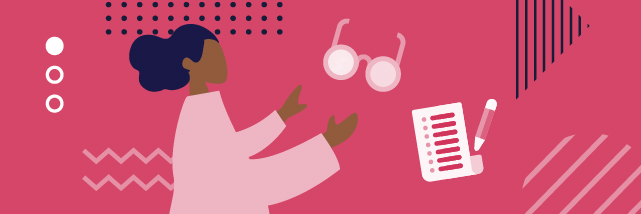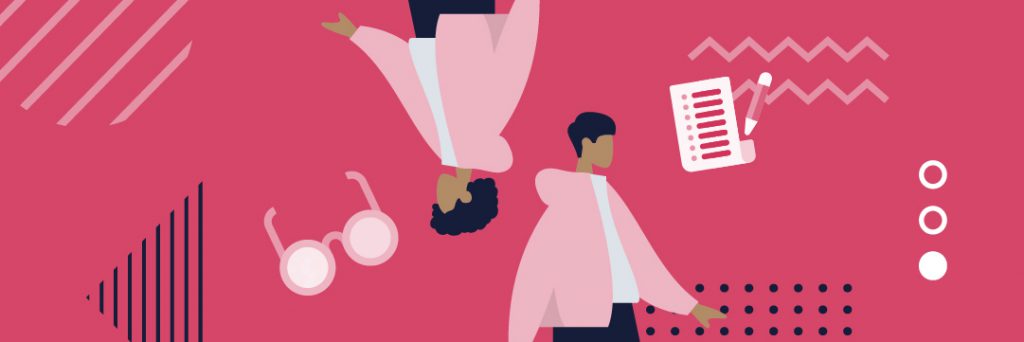When people are looking at the job of a proofreader, there’s seems to be a dilemma for many. The dilemma is – if you work as a proofreader, you are actually working as an editor, right?
Well, not really. To be precise, though, proofreading is a part of the editing process. By its definition, “proofreading is the reading of a galley proof or an electronic copy of a publication to find and correct production errors of text or art. Proofreading is the final step in the editorial cycle before publication.”
First, the editor makes the corrections at the content level. This means that he makes all the corrections that deal with the construction of sentences and correct use of words. Only after the editor finishes his part of the job, does the work of a proofreader begin. A proofreader ensures that the content is free of errors. These errors might be in spelling, punctuation, but also formatting.
As one guide to becoming a proofreader succinctly puts it, “proofreading is editing content to make it perfect.” Essentially, the whole writing process can be summed up like this:
- writing of the content;
- an editor reviews the text;
- a proofreader does a final review before it gets published.
With the advent of specialist online tools like Grammarly, many people argue there might be no need for proofreaders. But as the above source notes, “while this help, they’re not human and can’t understand context and meaning.”
What could they miss? At least the following:
- typos that are actual words
- wrong names
- omitted words
- incorrect punctuation
- formatting errors.
Add to that, for example, if a proofreader has to check a content writing text. Does, for example, the text include the required number of keywords?
How does a proofreader work – proofreading methods
Let us first take a look at how proofreading works and what methods a proofreader can use.
The method most proofreaders use goes under the name of a traditional method. Traditionally, a proofreader looks at an increment of text on the copy and then compares it to the corresponding typeset increment. Then marks any errors (sometimes called ‘line edits’) using standard proofreaders’ marks.
Unlike copy editing, the defining procedure of a proofreading service is to work directly with two sets of information at the same time. Proofs are then returned to the typesetter for correction. It is a common practice for ‘all’ such corrections, no matter how slight, to be sent again to a proofreader to be checked and initialed, thus establishing the principle of higher responsibility for proofreaders as compared to their typesetters or artists.
These days, most potential proofreading customers, particularly freelance writers, use the services of freelance proofreaders. Practically all of these, use this so-called traditional method of proofreading.
There are other methods of proofreading. These are mostly used by publishers themselves and/or specialized services. Such methods are copy holding, which uses two proofreaders at the same time. Double reading is when two proofreaders check the same text one after another. The scanning proofreading process is used mainly by publishers. There, before the data in a (Microsoft) Word file can be published, it must be converted into a format used by the publisher.
But whatever the proofreading method a proofreader uses, they “are expected to be consistently accurate by default because they occupy the last stage of typographic production before publication” (above).
Some requirement for a proofreading job
Mary Emma Koles is the owner and founder of online editing company ink200, and owner and director of SpiderSmart Learning Centers, which offer lessons and workshops in editing, writing, and other areas. She had this to say about proofreading: “I see (it) as reading a proof—analyzing it on a visual and content level for final changes after it’s evolved through its stages of revision.”
“The job is all about tweaking the syntax and diction in a piece to ensure the most fluid, original projection of the content possible.”
So what skills does a proofreader need according to Ms. Coles? “Patience for the tediousness that comes with fine-tuning every single aspect of every single word and line,” advised Koles. “Precision for the fine-tuning required in revising word-to-word, sentence-to-sentence, and paragraph-to-paragraph; and originality for the creativity each client deserves during every phase of revision.”
Formally, there is no academic degree required to become a proofreader. But, reading and writing proficiency comes as a core requirement, no matter what level of education a prospective proofreader has.
Also, it is essential to mention that every proofreader should be familiar with a few style guides. This is particularly true if they are working on specialized text or texts like academic, technical, or legal writing.
These days, a big chunk of writing goes to online sites and platforms. This means that a proofreader will very often work on website content. This would mean that she/he would need a certain level of digital skills. Besides working with word processing programs like Microsoft Word, they would have to have some general idea and work experience with hyperlinking1.

Getting a job as a proofreader
As one of the proofreading job guides notes, “most people believe you need an English degree to be a successful proofreader. But this isn’t always the case.” Still, “some of them require advanced degrees before they’ll even consider you.”
Getting a proofreading job with a regular print publisher, large or small will require a certain level of professional training as well as experience.
Although many commercial and college-level proofreading courses of varying quality can be found online, practical job training for proofreaders has declined along with its status as a craft. Many books also teach the basics of a proofreader to readers. Such tools of self-preparation have by and large replaced formal workplace instruction (above).
Some potential employers ask to test potential proofreaders. These tests usually include spelling, speed, and skill in finding mistakes in a sample text. Toward that end, they may be given a list of ten or twenty classically difficult words and a proofreading test, both tightly timed. The proofreading test will often have a maximum number of errors per quantity of text and a minimum amount of time to find them. The goal of this approach is to identify those with the best skill set. Still testing methods may differ.
In these online days proofreading training is mostly available online. Since proofreading has become one of the desired jobs among freelancers, most of the training is offered by experienced professionals. Most of their advice and some of the training courses are even offered for free.
But, are there enough proofreading jobs out there?
The answer to the above question is yes, particularly online. Some current counts note that “there were just about 1 billion (yes, 1 billion) active websites in existence. When you put together all the online content with print (newspapers, ads, magazines, pamphlets, etc.), that sure does make for a whole lot of copy — copy that needs to (or at least should) be proofread before it goes live or to print” (above).
Getting a proofreading job as a freelancer in many ways works as with any other freelancing job. Setting up your own work website, networking through LinkedIn and other professional or even ‘regular’ social media can do the trick.
Also, quite a number of freelancers, either a novice or experienced ones, use freelance marketplaces like BunnyStudio (which also offers proofreading jobs).
The first category any prospective freelance proofreader should try their hand with is general proofreading. “A general proofreader can tackle just about any document from academic papers to blog posts and even entire e-books. As a general proofreader, you need to know common proofreading marks and how to attract clients.”
Publisher proofreading is for those prospective proofreaders that are generally avid readers and want to deal with works of fiction or non-fiction that will go into print.
Specialized proofreading like the one in legal, technical, medical, or other academic fields would require a specific level of knowledge of one or more of these fields.
For example, the legal field often requires a lot of proofreading. In court proceedings, court reporters have to transcribe all of what is being said. These transcripts become official records.” But, before that happens someone has to go through a proofread the transcripts to make sure they are accurate and error-free” (above).
Working as a remote proofreader
Working as a proofreader, particularly a freelance one seems to be a job that is perfectly suited for remote work. Besides certain affinity, skills, and experience, one of the prerequisites of doing a proofreading job is a lot of peace and quiet. This is certainly easier to achieve at home or in an isolated space than in an office with more than one person.
A proofreader has to be equipped with a number of tools. These go from as mundane as two reading stands and a large ruler that can cover two pieces of text at the same time. Include into this list as many dictionaries, particularly specialized ones, medical ones, for example. Of course, do not forget specialized style and formatting guides, like the ones used in academic writing.
The salary of a proofreader can vary. According to Glassdoor, the national average salary for a Proofreader is $45,454 in the United States. The same source gives an average salary for a proofreader in Europe at around 2,100 Euros a month. You may also check what is requested as reimbursement or offered as such here at BunnyStudio. The opportunities are obviously there, both for potential proofreaders as well as those that need their services.
- A hyperlink, or simply a link, is a reference to data that the user can follow by clicking or tapping. ↩










